Varicose veins and spider veins are two common terms used for an umbrella condition called “venous insufficiency.” While both women and men can be affected, the conditions typically affect more women than men. It is estimated that 25 percent of adults today suffer from either one or both conditions.
What are the Causes?
Spider and varicose vein causes are frequently attributed to pregnancy, and also to jobs that require many hours of standing and walking or movement. Use of medical hormone therapy (birth control, menopause), abdominal pressure (obesity, tumors, constipation, even tight garments), prior skin trauma (including injury and over-exposure to UV) and heredity also factor in. Prior invasive vein surgery can also be implicated.
How Do These Conditions Form?
These conditions often begin with a decrease in circulation from the lower arterial system towards the heart. As blood pools in the leg area, this causes the discoloration and sometimes swelling that characterizes spider and varicose veins.
What are the Early Warning Signs?
Symptoms can include skin discoloration, venous swelling, the appearance of spider-like deep blue or purple veins visible through the skin, and a vague sensation of heaviness or discomfort in the legs and ankles. While patients may initially seek treatment for cosmetic purposes, the great majority make their first appointment because of the discomfort associated with venous insufficiency in either form.
What About Pain?
While spider veins may not cause pain for some, many people experience minimal to severe pain with varicose veins. Symptoms can include leg cramps (especially at night), itching, irritation, throbbing, tingling, swelling and/or a sensation of deep fatigue some patients describe as having “heavy legs.” More severe symptoms may include development of ulcers and thrombophlebitis, a very painful type of inflamed blood clot.
What are the Treatment Options?
In the past, vein treatment for either condition was limited to a more invasive procedure known as “vein stripping.” As medical technology has developed, and new techniques like radiofrequency and laser energy have been tested and approved, patients no longer have to endure the pain and long recovery time of vein stripping.
Today, an interventional radiologist uses radiofrequency and laser technology to treat affected areas. General anesthetic is not needed. Rather, the patient will remain conscious with only minor sedation, which produces a drowsy and pain-free state during the procedure. A very fine catheter will deliver radio frequency and laser energy directly to each affected vein. This heats the vein, collapses it and seals it shut (so the condition cannot recur at a later time). The procedure is rated as extremely safe, and even in cases where the patient has many affected veins, typically the whole procedure can be done on an outpatient basis in under one hour – and the patient is able to return to work the very next day!
Preparing for an Initial Consultation
While vein treatment itself is a common procedure today, only a limited number of specialists can perform the newer minimally invasive Interventional Radiology (IR) procedure. The first step is to make an appointment for an initial consultation. During the consultation is the time to ask questions and gather information. For instance, many patients are concerned about whether they may have to undergo an amputation (in nearly every case, the answer is “no.”) As well, patients often have questions about insurance coverage. Insurance today will typically cover vein treatments for medical but not cosmetic purposes.
What to Look for in a Specialist
When selecting a specialist, finding a certified interventional radiologist is the goal. As part of the pre-screening process, be sure to ask whether the specialists in the practice have completed a fellowship in Interventional Radiology. As well, patients should seek a practice that is able to get them seen right away (and, ideally, a practice that offers the option to book same-day or next-day appointments if desired).
Also find out the specialist’s expertise with critical care and medical cases – such as critical wounds, wound treatment and non-healing wound care, nighttime pain, and emergency cases. The more experience the specialist has gained in treating the medical complications of venous insufficiency, the more peace of mind and confidence the patient will have about their own treatment outcome.

